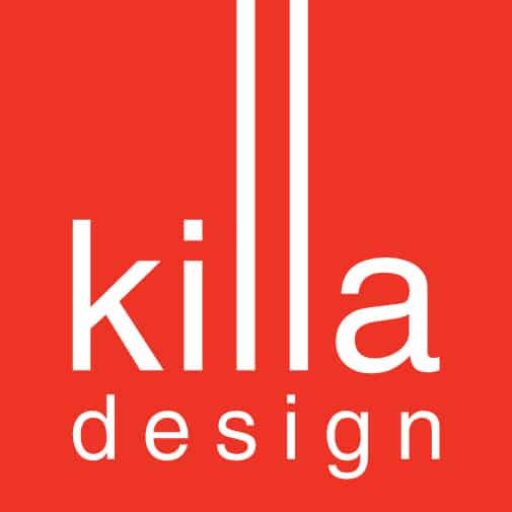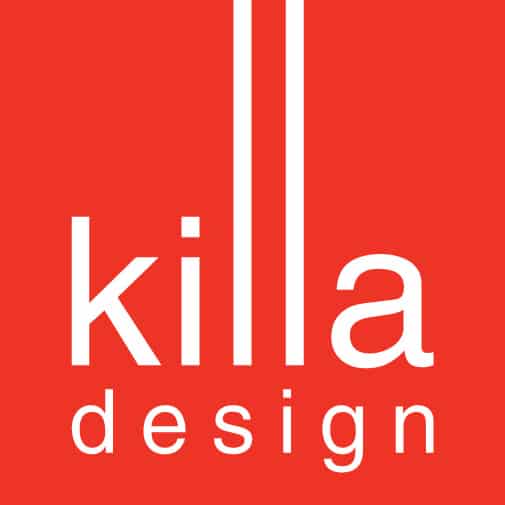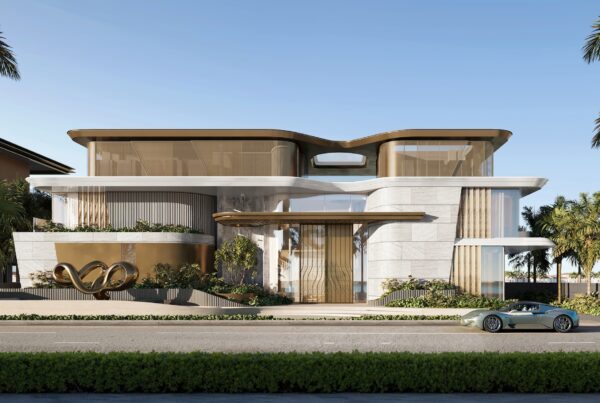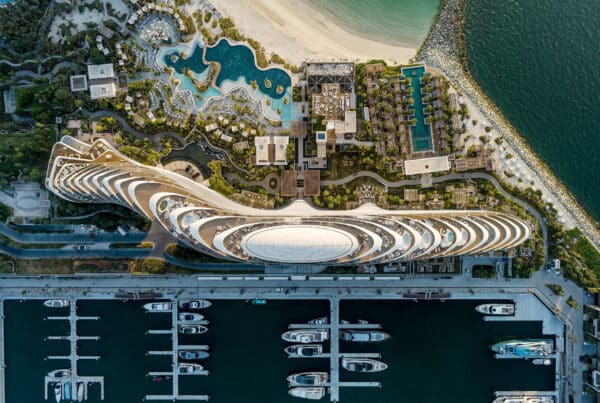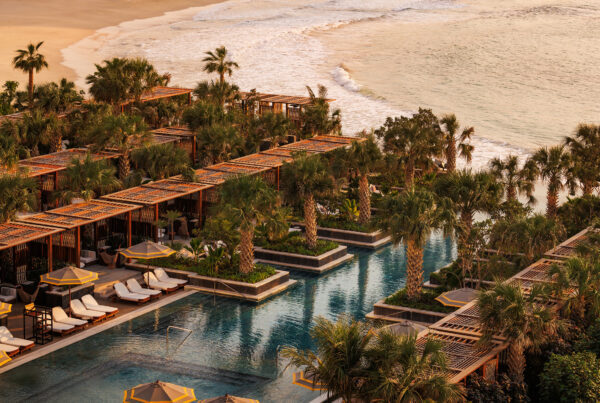Architect Shaun Killa has created iconic buildings with projects such as the Museum of the Future and the Dubai Opera. His latest work, the “Jumeirah Marsa Al Arab”, builds on this tradition whilst simultaneously breaking with it. In this interview, Killa explains why true luxury is often invisible, how to make a building evoke emotion and why architecture today must offer more than just spectacular pictures for Instagram.
Written by Laura Bähr | May 2025
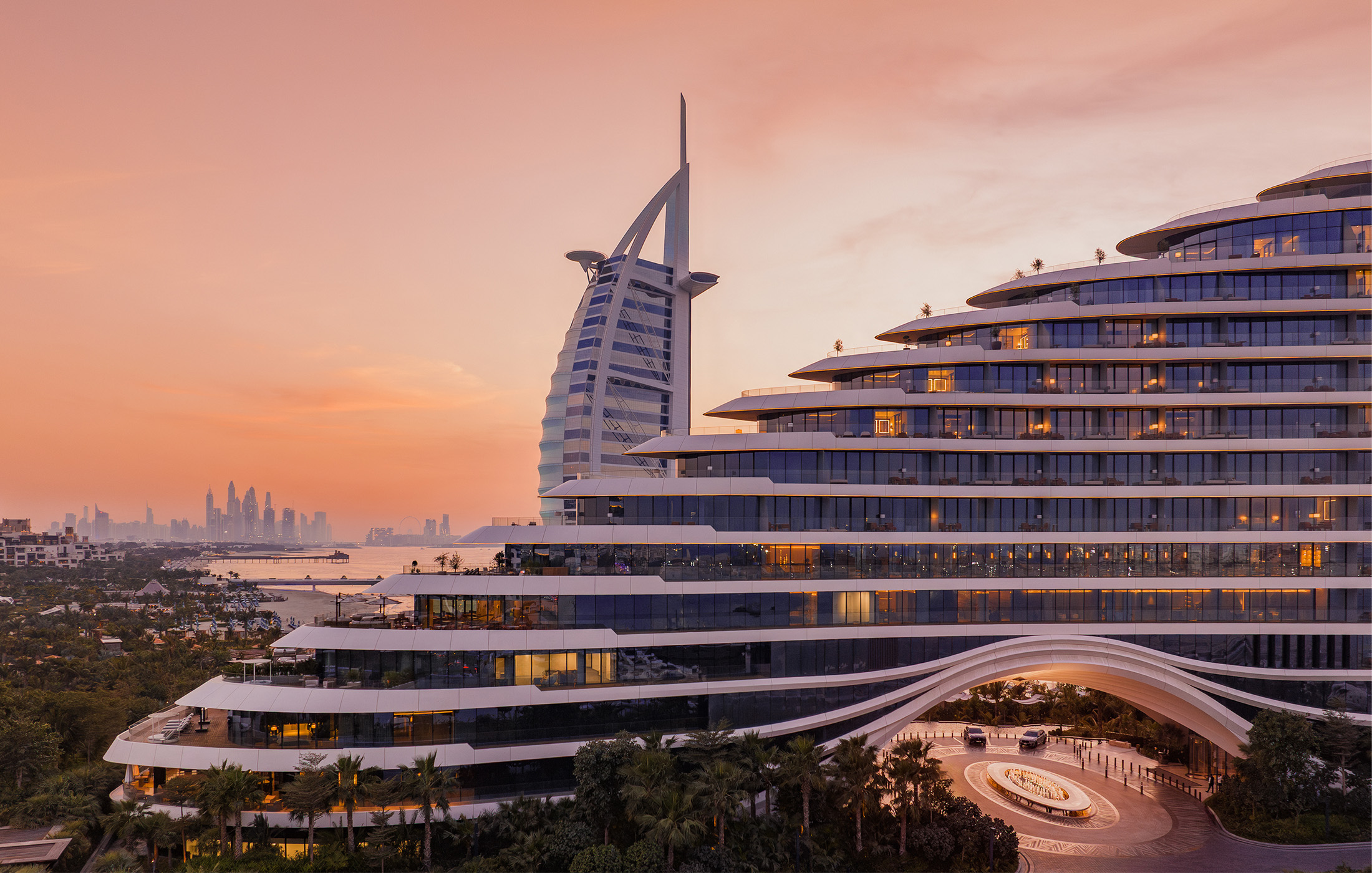
Jumeirah Marsa Al Arab in Dubai: The secrets behind the new luxury hotel
Shaun Killa is one of Middle East’s most influential contemporary architects. He rose to prominence through visionary large-scale projects such as the award-winning “Museum of the Future” in Dubai, a sculptural landmark that uniquely combines technology, poetry, and precision. Killa had previously set standards with iconic designs such as the Dubai Opera and the Bahrain World Trade Center – not only aesthetically but also in terms of sustainability. His latest project, the luxury hotel “Jumeirah Marsa Al Arab,” adds a new dimension to this oeuvre: quieter, more subtle, but no less impressive. In an interview with GQ, the South African-born architect talks about understated luxury, emotional spatial experiences, sketch ideation – and how to design a building that is neither loud nor intrusive, but simply unforgettable.
GQ: Mr. Killa, your new building, the “Jumeirah Marsa Al Arab”, is reminiscent of a superyacht in its design language. When did you know: This is the right design?
Shaun Killa: It was a process of refinement. The briefing of the client was clear: the Jumeirah Burj Al Arab remains the landmark. Our building should complement it, not compete with it. We have developed many variants – some were too bold, others too restrained. Finally, we decided on the one that looked balanced. The Jumeirah Marsa Al Arab does not compete – it brings its own sense of luxury and prestige.
Shaun Killa on the important common thread in a project
So it was also about respecting the existing landmark?
Shaun Killa: Absolutely. From the beginning, it was clear that the view of the Jumeirah Burj Al Arab could not be compromised, that was our first major design decision. The second was thematic: We wanted to embrace the site’s maritime heritage, but in a contemporary way. The building’s lines are inspired by a modern superyacht, luxurious, elegant, and modern.
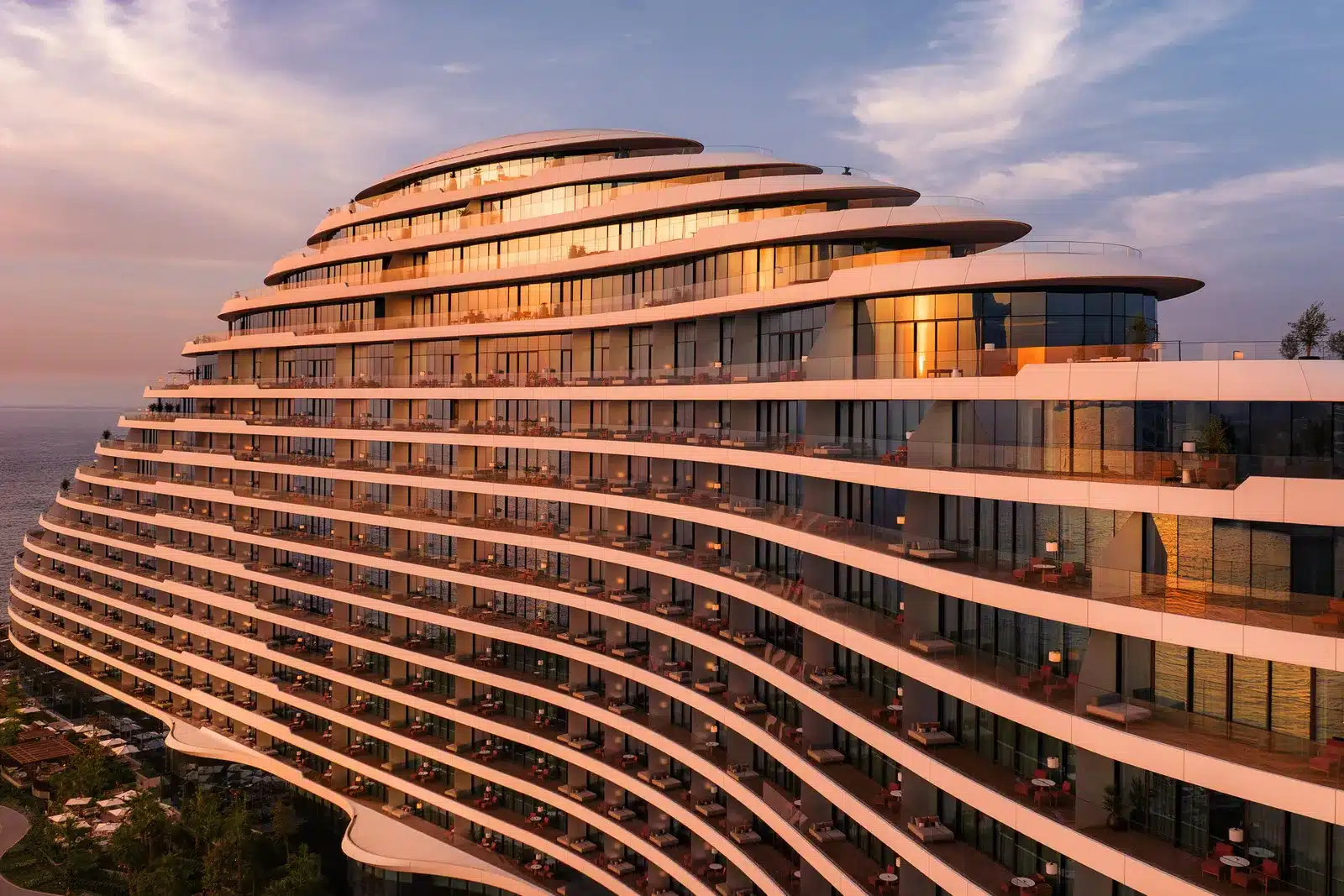
What can guests expect when they arrive?
Shaun Killa: Not a typical hotel entrance. From the moment you are dropped off, you stand on a direct axis with the Jumeirah Burj Al Arab – that’s dramatic. Inside, the experience changes. We focused on intimacy: smaller spaces, separate pools, relaxation areas – almost like on a private yacht. This is exactly what the ultra-luxury clientele is looking for. Not a huge lobby, but something intimate, quiet, comfortable.
The meaning of true luxury
In an earlier interview, you said the building had to be “restrained and luxurious” – and that true luxury is often unexpected. What is your personal favorite detail about this project? Maybe something you don’t notice right away?
Shaun Killa: I would say the arrival itself. You are dropped off under a large, wing-like arch and have a clear view of the sea, the horizon and the Jumeirah Burj Al Arab. Day or night, the combination of form, lighting and context is something special. It’s subtle, but it creates a powerful emotional impact – and that to me is luxury: not loud gestures, but moments that stick in your memory.
And inside?
Shaun Killa: Here to, we didn’t want a conventional approach. There is no central, monumental lobby. Instead, you move through a series of smaller, intimate spaces. Even the lounge is divided into five or six zones, each for about 20 to 25 people. This creates a sense of comfort. That was important to us. In other hotels everything is designed for grandeur – we wanted the opposite: something quiet and exclusive.
With a great view.
Shaun Killa: Exactly. When you enter the front facing rooms, you have three views simultaneously: the Jumeirah Burj Al Arab, across the marina and out to the open sea. It is an almost 720-degree view that gives guests a sense of constant connection with the water. This type of visual layering is rare – and it elevates the experience to a new level.

Accommodation or experience? The hotel industry of the 21st century Century
Does the atmosphere change at night?
Shaun Killa: Yes. We have introduced a subtle LED line that runs along the balconies and gently traces the architecture after sunset. The building is deliberately designed to be sculptural – it shifts, staggers back, interlocks in certain areas. The movement of these lines draws the eye across the form to where the building merges into the landscape. For me, that’s the real highlight: the form becomes even more expressive in the softer light.
How do you start a design – with an idea, a line or a feeling?
Shaun Killa: For me, it usually starts with a feeling. I ask myself: what does this building want to be? Whether it’s the Museum of the Future, the Dubai Opera or a resort – I start by thinking about how it should fit into its context. It is about understanding the relationship to the place, to the city, the people – and then finding a solution that is elegant and timeless.
What does that mean in practice?
Shaun Killa: At the Museum of the Future, we had six weeks. I tried four or five different variations in the first half – and discarded them all. It just didnt feel right. I started from scratch. Sometimes you have to go through that process to find the right answer.
The design secrets of the Jumeirah Marsa Al Arab
And with the “Jumeirah Marsa Al Arab”?
Shaun Killa: I thought of the “Trilogy”: the very modern Jumeirah Burj Al Arab, the Jumeirah Beach Hotel – and what comes next? We divided the building to preserve the view of Jumeirah Burj Al Arab from Sunset beach, and then focused on the form. It should have a maritime quality, reminiscent of a superyacht in motion. But also to be majestic – subtle in its architectural language. Often the simplest forms are the most elegant.
Is there a technical detail on the Marsa Al Arab that is particularly clever, but barely visible?
Shaun Killa: Yes, the facade. It is made of GRP (glass reinforced plastic) and has been completely modeled in Rhino 3D. Each geometry went directly into fabrication, allowing us to create continuous, seamless forms with almost invisible joints. This level of refinement is very demanding. Another example is the Quay Wall Villas—the world’s first villas built directly over a rock revetment. Normally, such infrastructure and architecture are separate—we brought them together. This created villas that appear to float.
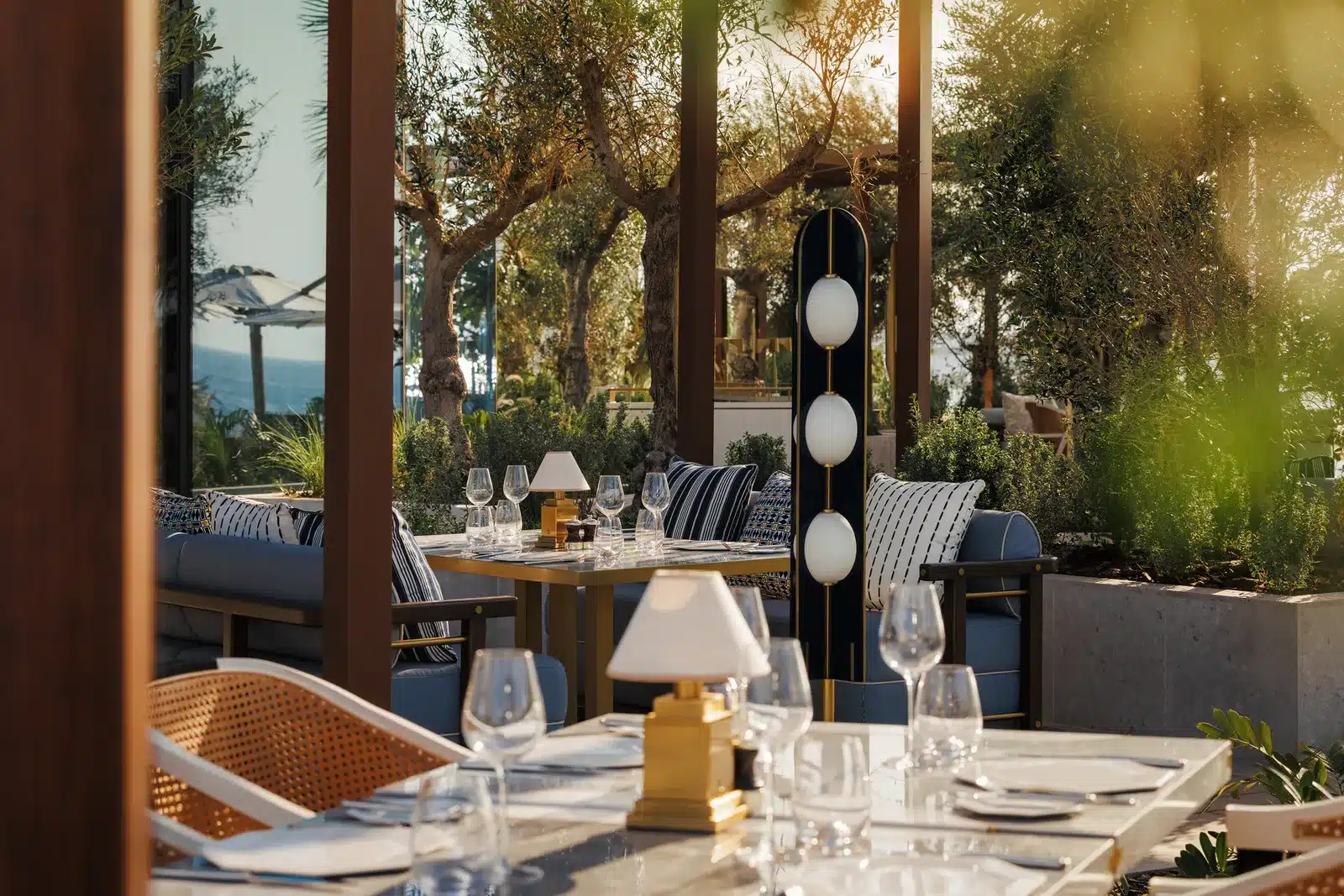
Do you still work by hand?
Shaun Killa: Yes, I still sketch with pen or pencil, whatever’s available. (laughs) When I draw, I work on how a building behaves in its environment. It’s intuitive. Drawing allows me to quickly test ideas without immediately falling into technical specifications. On the computer, you immediately get to scale and detail, sketching keeps it open, conceptual.
Are there rituals that you can no longer do without?
Shaun Killa: Absolutely. I visit the construction site as often as possible. You notice things on site that you don’t see in a drawing. I also ask a lot of questions, not just about functions or numbers, but about emotional goals. What do I want people to feel here? What memories do I want them to take away? I try to understand everything from the perspective of the client, the guests and the building itself.
Do you prefer to work alone or in a team?
Shaun Killa: It depends. I like to sketch on my own to clarify the core idea, but I often pitch my ideas to the team. We have over 100 talented designers, and honestly, it often becomes a bit of a design competition, in the best sense. (laughs) They challenge each other, and challenge me too. That energy helps the work evolve.
Sustainability as a central topic
With all the external influences – from the customer to the technology – do you have a personal guiding principle that you adhere to?
Shaun Killa: Yes, I always stick to the core idea. Over the course of a project, it’s easy to lose the original thought. But if you maintain that common thread, from the initial design to the final detail, the architecture becomes coherent and can become truly iconic. And sustainability is part of the process from the very beginning, through orientation, passive solar control , energy recovery, and renewable energy. In some projects, we’ve achieved complete solar operation. At Jumeirah Marsa Al Arab, the space constraints didn’t allow for that, but we incorporated all feasible sustainable elements.
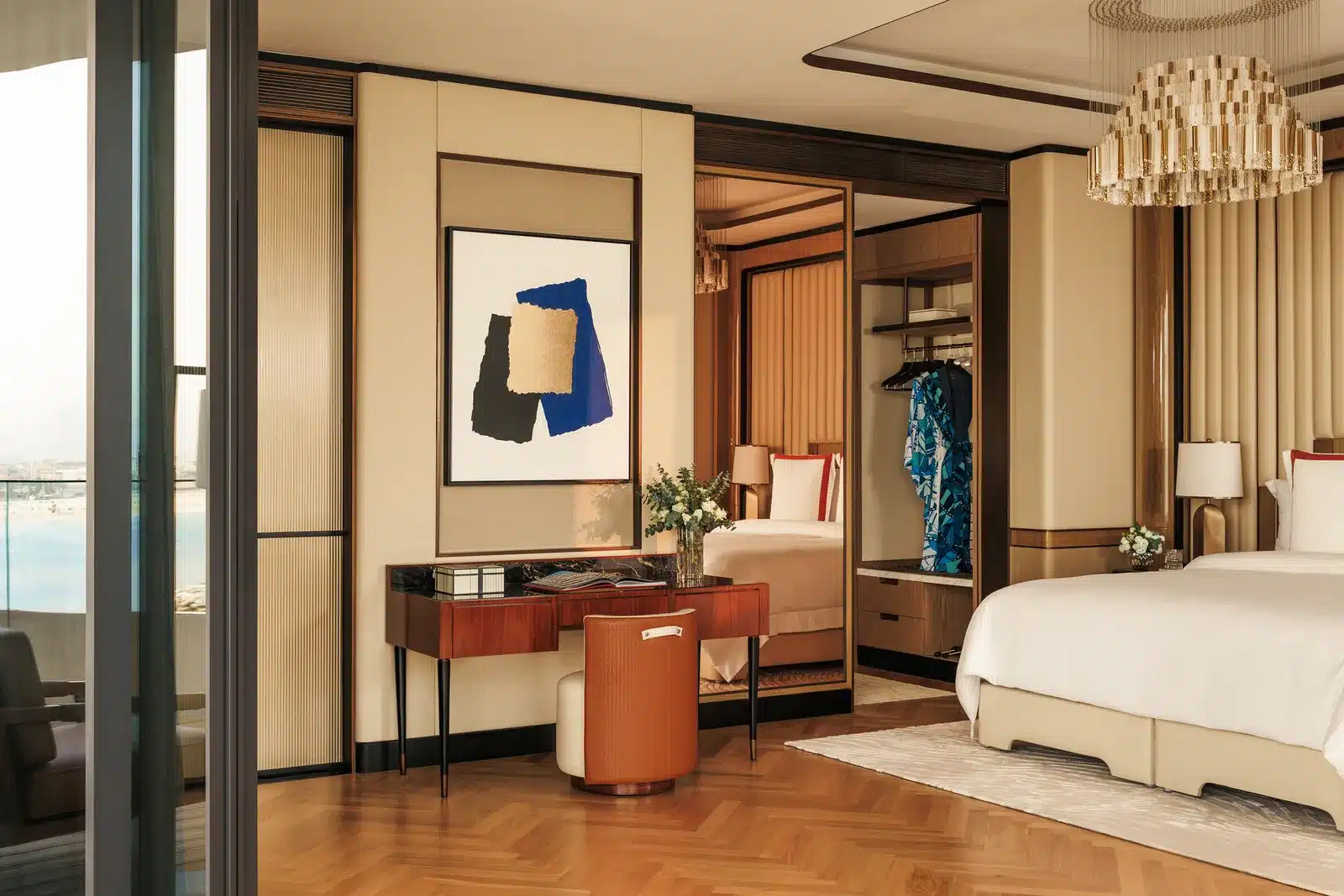
Sustainability is currently a central topic in architecture. Do you think the term is sometimes overused?
Shaun Killa: Yes, definitely. It’s often mentioned, but not always backed up with substance. To achieve true sustainability, you have to work through the details, materials, systems, efficiency. Only then can you convince clients or budget planners. If you don’t know exactly what you’re talking about, you’ll quickly be outvoted. We have real experience with net-zero projects, and this benefits even those projects where complete sustainability isn’t feasible.
Was there a detail in this project that could have been implemented better without regulations?
Shaun Killa: Not really. We always work within technical and regulatory frameworks and integrate them into the design from the very beginning. Even a project like the Museum of the Future , which looks almost otherworldly, meets all regulations regarding fire safety and escape routes. You work within the rules, and still create something extraordinary. That’s what I call solution-oriented design.
You have been in business for decades – how have the expectations of architecture changed?
Shaun Killa: The hospitality industry has completely changed. Twenty years ago, a resort was primarily about function, a place to stay and eat. Today, people are looking for an experience. They want something emotional, something they can share. Instagram has changed that, many guests find a hotel through pictures. And once they’re there, they’re looking for moments. A resort today needs to resonate visually and emotionally.
The Instagram-driven design approach of modern architecture
As an architect, how do you deal with this Instagram-driven design approach?
Shaun Killa: We embrace it. In our studio, we call them “irresistible, Instagrammable moments” (laughs). Every project should have seven to ten such moments, not because they’re good for social media , but because they evoke a strong emotional response. When someone feels something when they walk into a room, they want to capture, preserve, and share that moment and when it’s shared, others want to experience it for themselves.
And that works?
Shaun Killa: Yes, absolutely. This resort hasn’t even officially opened yet , and yet occupancy is already remarkably high. This has been achieved almost entirely through word of mouth and social media. Several well-known influencers have already visited—not by invitation, but because they wanted to. It’s about ensuring that every guest, no matter who they are, has a truly special experience. Something unforgettable.
Does it sometimes bother you as an architect that today it often seems to be just about photos?
Shaun Killa: That’s simply the direction the world is heading. People express themselves visually. If someone is moved by a space and wants to share that, that’s a good thing. As designers, it’s our job to respond to that. To create spaces that touch people and are memorable—whether someone takes a photo or not.
